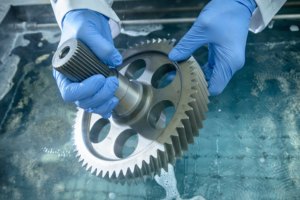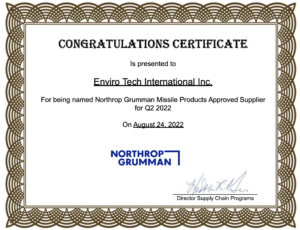It can sometimes be difficult to determine exactly which cleaning solvents among all the available choices will best meet your needs. To make an informed choice, it helps to become familiar with the different types of solvent cleaners.
Understanding the Types of Cleaning Solvents
There are three main types of metal cleaning solutions available for use in precision cleaning:
- Oxygenated solvents
- Hydrocarbon solvents
- Halogenated solvents
Let’s take a look at their uses and what characterizes each type.
Oxygenated solvents. As their name implies, these solvents contain oxygen in their molecular structure. Derived from petroleum products, they typically have low toxicity and high solvent power.
Oxygenated solvents are widely used as additives in manufacturing a huge variety of products from cosmetics to paint, as well as for cleaning. Many of these applications require a high degree of purity, so specifications for these solvents often focus on levels of impurities, and these products are typically refined to maintain a high level of purity. However, the manufacturing process for these substances is not expensive, so they tend to be relatively affordable.
Examples of oxygenated solvents include alcohols, ethers, esters, glycol ethers, glycol ether esters and ketones.
Hydrocarbon solvents. These are petroleum-based solvents whose chemical structure contains hydrogen and carbon atoms. Hydrocarbon solvents can have complex chemical structures. There are two main types of hydrocarbon solvent, including:
- Aliphatic solvents. These have a straight-chain hydrocarbon structure and are used as metal cleaning solvents as well as in manufacturing. Some examples of aliphatic solvents include gasoline, kerosene and hexane.
- Aromatic solvents. Widely used as degreasing agents as well as in the manufacture of paints, inks and agricultural chemicals, these solvents contain a benzene ring structure. Examples include benzene, xylene and toluene.
The complex composition of hydrocarbon solvents means they can be formulated to fulfill very specific industrial requirements. It is not uncommon for custom hydrocarbon solvents to be created. Some of the distinguishing factors between different hydrocarbon solvents include flash point, density, distillation range and aroma.
Halogenated solvents. These solvents contain halogen atoms (such as fluorine, bromine, iodine or chlorine) in their molecular structure. Because they are typically stable, non-flammable and fast-evaporating with high solvent capacity, they were widely used in industry for precision cleaning and many other applications. However, many types of halogenated solvents have been or are being phased out for environmental reasons. Some examples include perchloroethylene, chlorinated fluorocarbons, and 1,1,1-trichloroethane. If you are looking for an alternative to a specific type of halogenated solvent, call us to discuss alternatives.
Choosing a Metal Cleaning Solvent
When choosing a metal cleaning solution, you will need to consider a number of factors, including:
- Type of material you are cleaning
- Your metal cleaning method of choice and existing equipment
- Compliance with health and environmental regulations
- Storage needs
- Recovery and recycling options
- Product availability
- Price and budget
Your Industrial Cleaning Solvent Experts
Solvent selection can be a complex task. It is important to find the right one for your needs because your choice of solvent can significantly impact performance, product quality, regulatory compliance and profitability.
At Enviro Tech, customer service is our priority. We have been helping companies like yours find the best solutions for their precision cleaning needs since 1994. If you have questions about solvent selection, one of our expert associates will be happy to help. Call us today at 708-249-6501 — or contact us here.





